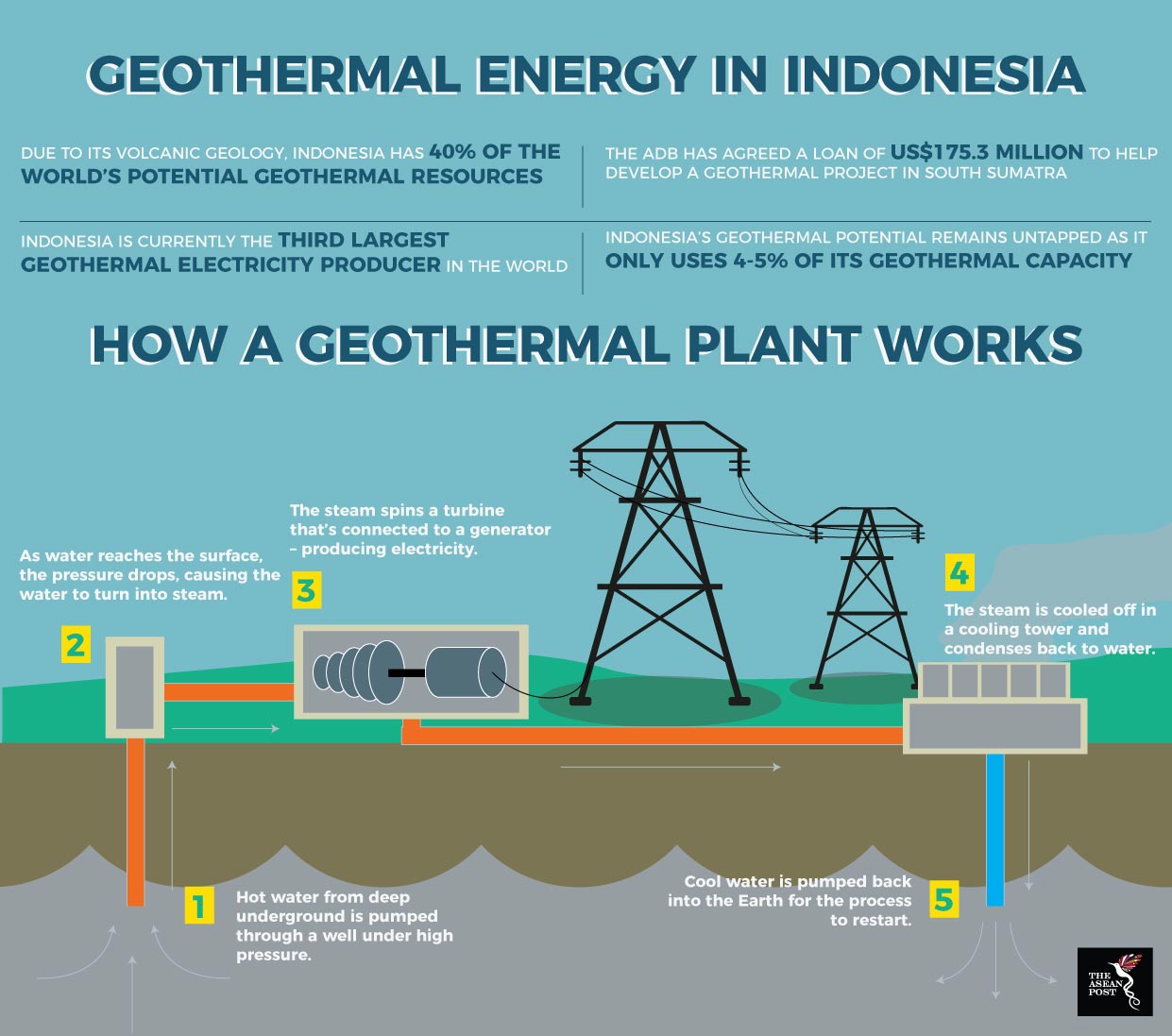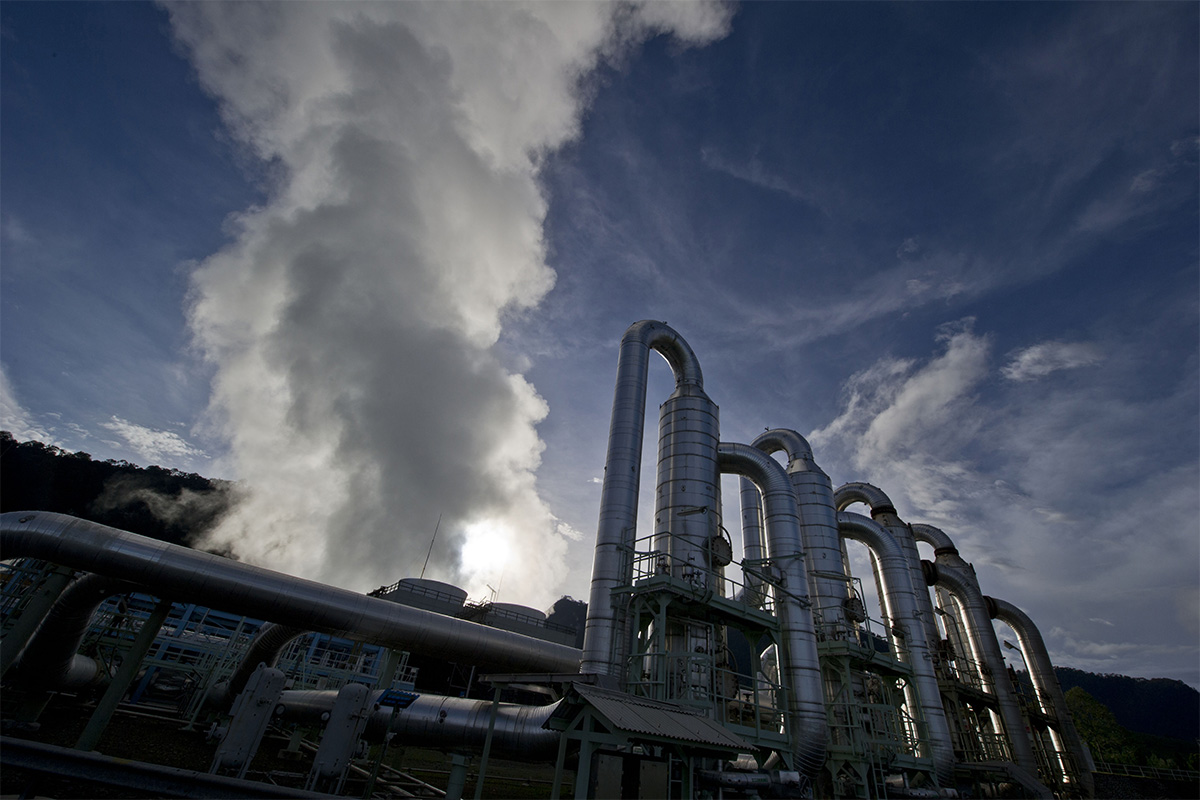Many are unaware of this, but Southeast Asia is home to 25 percent of the world’s geothermal generation capacity. Most, if not all of this geothermal capacity is located in the Philippines and Indonesia who are ranked as the second and third largest producers of geothermal energy in the world.
Geothermal energy is produced by heat from the earth and is considered a form of renewable energy. It’s also considerably safer than most other energy sources. Unlike fossil fuel plants, geothermal power does not produce greenhouse gases that are harmful to the environment.
There is still plenty of untapped geothermal resources in the region – particularly in Indonesia. The country is part of the Pacific Ring of Fire and is dominated by volcanoes. Its geology makes it perfect for geothermal energy generation. However, despite the fact that Indonesia is currently the third largest geothermal electricity producer in the world, plenty of the country’s geothermal resources remain untapped. Currently, Indonesia uses just 4-5 percent of its geothermal capacity. It is believed that Indonesia is sitting on 28,000 megawatts (MW) of potential geothermal energy.
At the moment, Indonesia has seen electricity demand in the country soar due to increasing economic growth and a rising middle class. With a population of 260 million, Indonesia alone accounts for 35 percent of total energy demand in the region. Indonesia is also looking to achieve a target of 23 percent renewable energy to generate electricity for its grid by 2025. As it stands, only 7 percent of the energy used comes from renewable sources.
Geothermal power makes sense
To meet renewable energy targets and to fulfil the energy demand of its citizens Indonesia is starting to realise the huge potential of geothermal energy. The country has taken active steps to increase investment in the geothermal sector.
Earlier this week the Asian Development Bank (ADB) agreed to a US$175.3 million loan for Indonesian energy company PT Supreme Energy Rantau Dedap to help finance its geothermal project in South Sumatra. The project is said to have the potential to generate more than 90 MW of electricity which will be used to power up to 13,000 homes.
 Source: Various sources
Source: Various sources
The geothermal energy sector accounts for 80 percent of overall renewable energy investment in the country, worth up to US$1.7 billion. However, the numbers can and should be much higher. There have been various complaints that the government there has not set up a very conducive environment for investment. According to research by Climate Scope, Indonesia ranked 34th out of 57 countries surveyed for financing and investment in clean energy. Furthermore, in EY’s Renewable Energy Country Attractiveness Index (RECAI) 2016, Indonesia comes in at 38 out of 40 countries surveyed, revealing the dire renewable energy investment environment in Indonesia.
To overcome this, Indonesia has reformed its energy tariffs system to make investing in renewables more attractive. The Ministry of Energy and Mineral Resources (MEMR) has created a roadmap for geothermal development from 2015 to 2025. The ministry has raised its geothermal energy targets to 5,000 MW to be achieved by 2025. This year alone, the MEMR expects an additional 255 MW in geothermal capacity. Part of the roadmap involves simplifying licensing processes as well as providing incentives for power generation.
However, making geothermal energy more attractive to investors may not be enough to attract investment. By default, the cost to generate geothermal energy is higher than most other forms of renewable energy. The exploration costs and construction of geothermal plants are almost twice that of coal power plants.
More needs to be done
One option that Indonesia could explore instead of looking for private investment to build the country’s geothermal infrastructure is by reducing fuel subsidies and using the additional funds to finance geothermal projects.
Another challenge in developing geothermal energy in Indonesia is that it could disrupt designated conserved forest reserves as 80 percent of the country’s geothermal reserves are located on them. To complicate matters further, some of these reserves are located on areas designated as sacred sites. For example, PT Tenaga Bumi Bali’s geothermal project was suspended in 2005 after widespread protests by the local community there.
In order to develop its geothermal energy sector, the Indonesian government has to play a more pro-active role. Instead of relying on investments and loans to come in, the relevant authorities need to take more concrete steps to reduce red-tape and make the environment more conducive for renewable energy investments. The government there must also be astute at balancing the sensitivities of its local communities and the nation’s energy needs as well.
